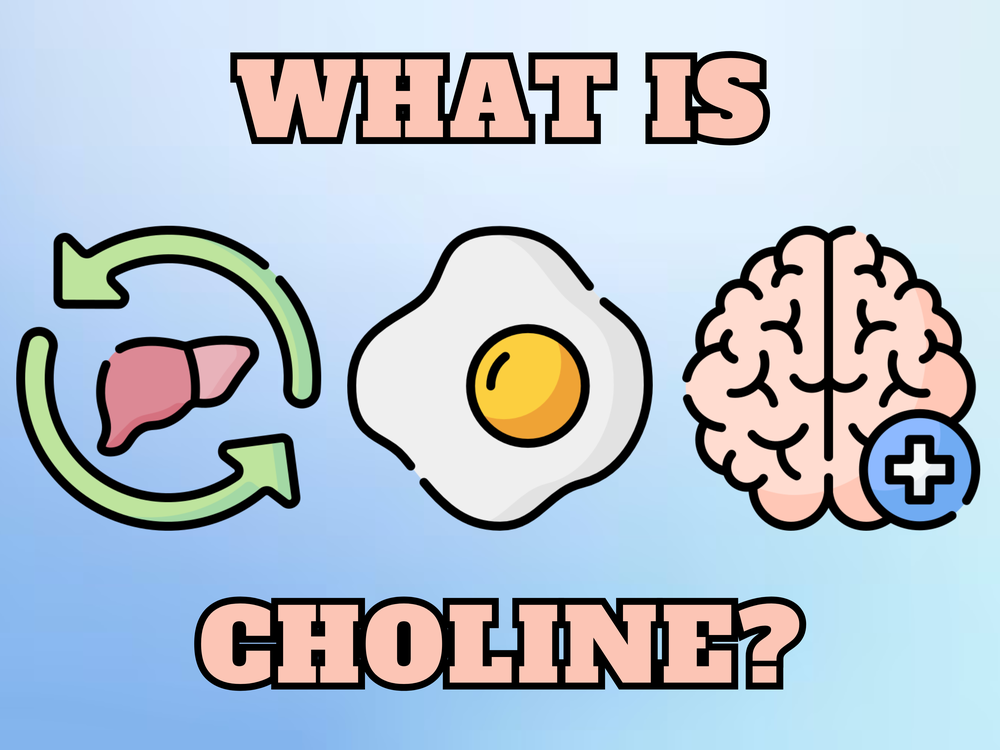
Introduction
Choline is an essential nutrient that many people are unaware of, despite its critical role in health. While the body can produce small amounts of choline in the liver, it is not enough to meet daily needs, meaning more must be consumed through diet.
Like many other essential micronutrients, choline is not required to appear on nutrition facts labels, so it often goes unnoticed. Only recognized as an required nutrient in 1998, choline supports brain health, metabolism, and cell integrity.

High Choline Foods

Role of Choline
But first, what is choline? While neither a vitamin nor a mineral, choline is most similar to the class of B vitamins, and is water-soluble. Previously know as Vitamin B4, choline plays a vital role in nervous system function, brain health, methylation, and energy metabolism. However, choline is no longer labeled as a 'vitamin', as the body can synthesize it on it's own, though not enough for optimal bodily funciton.
Choline plays a diverse role in the body, functioning as both a vitamin-like compound and a building block for essential molecules. It is required to make acetylcholine, a neurotransmitter involved in memory, learning, and muscle control. Observational studies have linked increased choline consumption to improved brain function and a lower rate of Alzheimer's disease and other forms of dementia.
In addition, choline contributes to the structural integrity of cell membranes through phospholipids like phosphatidylcholine. It also supports lipid metabolism and helps transport fats out of the liver, preventing fatty liver disease. Moreover, choline participates in methylation reactions, which regulates gene expression, DNA repair, and detoxification pathways. While the liver does synthesize some choline, most people need to consume it through diet to avoid deficiency.
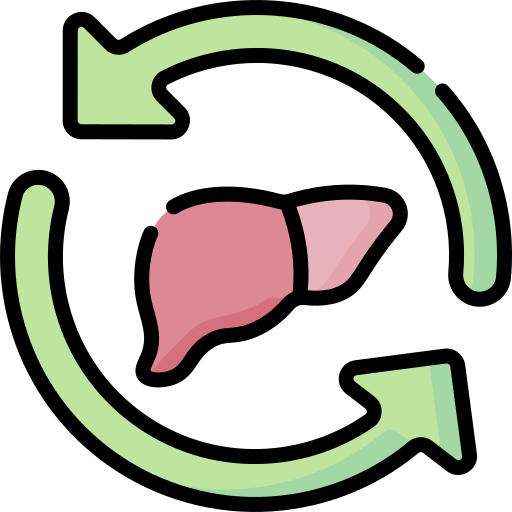
Benefits of Choline

Symptoms of Low Choline

Causes of Low Choline

Symptoms of High Choline
Choline is a nutrient that would be extremely difficult to get too much of naturally. Realistically, the only cause of too much choline in the body would be over supplementation. Symptoms include the following:

On Food and Supplementation
Most people can meet their choline needs through diet if they consume adequate amounts of eggs, meat, fish, or dairy. Those following a vegetarian or vegan diet will likely struggle to reach an optimal intake, as most plant-based foods contain little to no choline. Additionally, those with diets deficient in folate may require more choline, as choline instead becomes the primary methyl donor instead of folate.
If you need more, choline is available in supplement form, often as choline bitartrate, phosphatidylcholine, or citicoline (CDP-choline). While supplements can be useful in cases of deficiency or increased need (e.g., pregnancy), routine use is not recommended unless advised by a healthcare professional.

Daily Consumption

Foods High In Choline
Meat (raw)
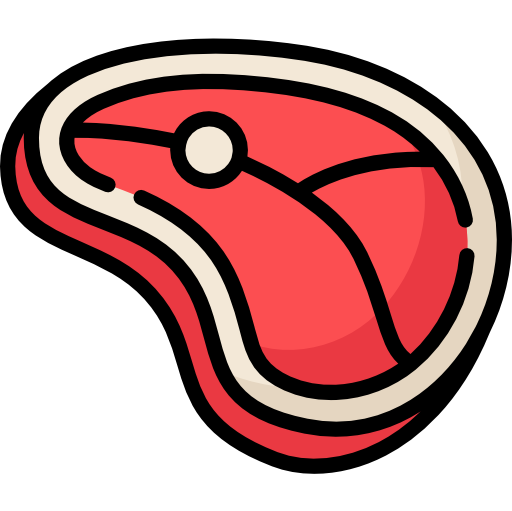
Fish and Seafood (Raw unless specified)

Beans (dried)

Vegetables (Raw)

Dairy
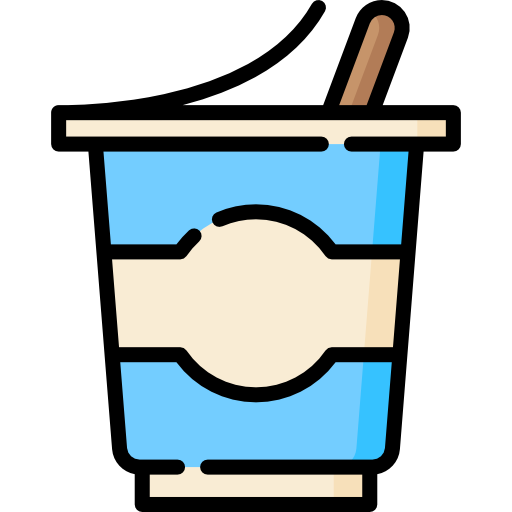
Best Sources of Choline
Per serving: Beef liver - 376 mg (4 oz, 113 g)
Per 100 g: Beef liver - 333 mg
Per 100 cal: Beef liver - 247 mg
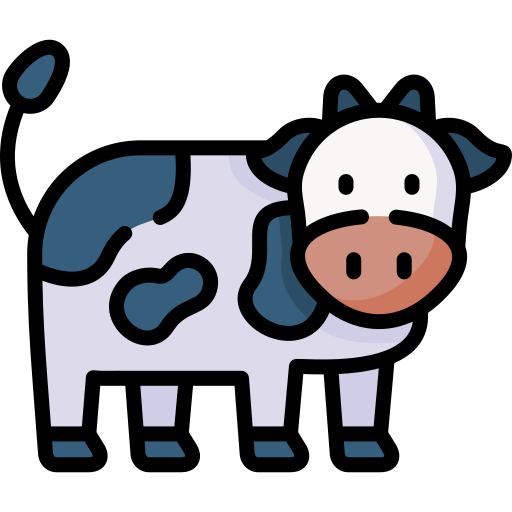
Sources
This post may contain affiliate links
Choline is an essential nutrient that many people are unaware of, despite its critical role in health. While the body can produce small amounts of choline in the liver, it is not enough to meet daily needs, meaning more must be consumed through diet.
Like many other essential micronutrients, choline is not required to appear on nutrition facts labels, so it often goes unnoticed. Only recognized as an required nutrient in 1998, choline supports brain health, metabolism, and cell integrity.

High Choline Foods

Role of Choline
But first, what is choline? While neither a vitamin nor a mineral, choline is most similar to the class of B vitamins, and is water-soluble. Previously know as Vitamin B4, choline plays a vital role in nervous system function, brain health, methylation, and energy metabolism. However, choline is no longer labeled as a 'vitamin', as the body can synthesize it on it's own, though not enough for optimal bodily funciton.
Choline plays a diverse role in the body, functioning as both a vitamin-like compound and a building block for essential molecules. It is required to make acetylcholine, a neurotransmitter involved in memory, learning, and muscle control. Observational studies have linked increased choline consumption to improved brain function and a lower rate of Alzheimer's disease and other forms of dementia.
In addition, choline contributes to the structural integrity of cell membranes through phospholipids like phosphatidylcholine. It also supports lipid metabolism and helps transport fats out of the liver, preventing fatty liver disease. Moreover, choline participates in methylation reactions, which regulates gene expression, DNA repair, and detoxification pathways. While the liver does synthesize some choline, most people need to consume it through diet to avoid deficiency.

Benefits of Choline
- Aids in cognitive function
- Assists in DNA methylation and gene regulation
- Helps transport and metabolize fats
- Improves verbal and visual memory
- Lowers blood pressure
- Maintains structural integrity of cell membranes
- May reduce risk of neural tube defects during pregnancy
- May play a role in heart health through homocysteine regulation
- Precursor to acetylcholine, aiding in memory and muscle movement
- Protects the liver
- Protects cardiovascular health
- Supports brain development
- Supports nervous system function and signaling

Symptoms of Low Choline
- Cognitive decline or memory issues
- Fatigue or low energy
- Fatty liver disease
- Increased risk of neural tube defects in pregnancy
- Mood changes (anxiety, irritability)
- Muscle damage or weakness
- Nerve damage
- Poor fetal brain development (if deficient during pregnancy)

Causes of Low Choline
- Certain medications that interfere with methylation pathways
- Genetic variations affecting choline metabolism
- High alcohol consumption
- Increased demand (pregnancy, lactation)
- Low dietary intake
- Vegetarian or vegan diet

Symptoms of High Choline
Choline is a nutrient that would be extremely difficult to get too much of naturally. Realistically, the only cause of too much choline in the body would be over supplementation. Symptoms include the following:
- Diarrhea
- Excessive sweating
- Fishy body odor
- Increased risk of cardiovascular disease
- Liver toxicity
- Low blood pressure
- Nausea or vomiting

On Food and Supplementation
Most people can meet their choline needs through diet if they consume adequate amounts of eggs, meat, fish, or dairy. Those following a vegetarian or vegan diet will likely struggle to reach an optimal intake, as most plant-based foods contain little to no choline. Additionally, those with diets deficient in folate may require more choline, as choline instead becomes the primary methyl donor instead of folate.
If you need more, choline is available in supplement form, often as choline bitartrate, phosphatidylcholine, or citicoline (CDP-choline). While supplements can be useful in cases of deficiency or increased need (e.g., pregnancy), routine use is not recommended unless advised by a healthcare professional.

Daily Consumption
- Men: 550 mg
- Women: 425 mg
- Breastfeeding: 550 mg
- Pregnant: 430 mg
- Upper Limit: 3,500 mg
- Absorption Rate: 60-90%

Foods High In Choline
| Food | Serving Size | Choline Per Serving |
Choline Per 100 g |
Choline Per 100 cal |
|---|---|---|---|---|
| Beef Liver | 4 oz (113 g) |
376 mg (69 %) |
333 mg (61 %) |
247 mg (45 %) |
| Chicken Breast (Boneless & Skinless) |
4 oz (113 g) |
93 mg (17 %) |
82 mg (15 %) |
68 mg (12 %) |
| Chicken Liver | 4 oz (113 g) |
219 mg (40 %) |
194 mg (35 %) |
163 mg (29 %) |
| Chicken Thighs (Boneless & Skinless) |
4 oz (113 g) |
61 mg (11 %) |
54 mg (10 %) |
45 mg (8 %) |
| Eggs | 1 egg (50 g) |
168 mg (31 %) |
335 mg (61 %) |
226 mg (41 %) |
| Ground Beef (93% Lean) |
4 oz (113 g) |
78 mg (15 %) |
69 mg (13 %) |
45 mg (9 %) |
| Ground Turkey (93% Lean) |
4 oz (113 g) |
60 mg (11 %) |
53 mg (10 %) |
35 mg (7 %) |
| Pork Tenderloin | 4 oz (113 g) |
92 mg (17 %) |
81 mg (15 %) |
74 mg (14 %) |

Fish and Seafood (Raw unless specified)
| Food | Serving Size | Choline Per Serving |
Choline Per 100 g |
Choline Per 100 cal |
|---|---|---|---|---|
| Anchovies (Canned) |
1.6 oz (45 g) |
38 mg (7 %) |
85 mg (15 %) |
40 mg (7 %) |
| Clams (Canned) |
3 oz (85 g) |
69 mg (13 %) |
81 mg (15 %) |
75 mg (14 %) |
| Cod | 3 oz (85 g) |
55 mg (10 %) |
65 mg (12 %) |
79 mg (15 %) |
| Crab (Canned) |
3 oz (85 g) |
69 mg (13 %) |
81 mg (15 %) |
98 mg (18 %) |
| Haddock | 3 oz (85 g) |
55 mg (10 %) |
65 mg (12 %) |
88 mg (16 %) |
| Herring | 3 oz (85 g) |
55 mg (10 %) |
65 mg (12 %) |
41 mg (8 %) |
| Lobster | 3 oz (85 g) |
60 mg (11 %) |
70 mg (13 %) |
91 mg (17 %) |
| Mackerel (Canned) |
3 oz (85 g) |
72 mg (13 %) |
85 mg (15 %) |
54 mg (10 %) |
| Mussels | 3 oz (85 g) |
55 mg (10 %) |
65 mg (12 %) |
76 mg (14 %) |
| Octopus | 3 oz (85 g) |
55 mg (10 %) |
65 mg (12 %) |
79 mg (15 %) |
| Oysters | 3 oz (85 g) |
55 mg (10 %) |
65 mg (12 %) |
127 mg (24 %) |
| Salmon | 3 oz (85 g) |
81 mg (14 %) |
95 mg (17 %) |
67 mg (12 %) |
| Sardines (Canned) |
3 oz (85 g) |
64 mg (12 %) |
75 mg (14 %) |
36 mg (7 %) |
| Scallops | 3 oz (85 g) |
55 mg (10 %) |
65 mg (12 %) |
94 mg (17 %) |
| Shrimp | 3 oz (85 g) |
69 mg (13 %) |
81 mg (15 %) |
114 mg (21 %) |
| Squid | 3 oz (85 g) |
55 mg (10 %) |
65 mg (12 %) |
71 mg (13 %) |

Beans (dried)
| Food | Serving Size | Choline Per Serving |
Choline Per 100 g |
Choline Per 100 cal |
|---|---|---|---|---|
| Chickpeas | 1/4 cup (50 g) |
50 mg (9 %) |
99 mg (18 %) |
26 mg (5 %) |
| Edamame (Frozen) |
3/4 cup (85 g) |
48 mg (9 %) |
56 mg (10 %) |
51 mg (9 %) |
| Green Lentils | 1/4 cup (50 g) |
48 mg (9 %) |
96 mg (18 %) |
27 mg (5 %) |
| Lima Beans | 1/4 cup (50 g) |
49 mg (9 %) |
97 mg (18 %) |
29 mg (5 %) |
| Soybeans | 1/4 cup (50 g) |
58 mg (11 %) |
116 mg (21 %) |
26 mg (5 %) |

Vegetables (Raw)
| Food | Serving Size | Choline Per Serving |
Choline Per 100 g |
Choline Per 100 cal |
|---|---|---|---|---|
| Artichoke | 1 cup (150 g) |
51 mg (9 %) |
34 mg (6 %) |
64 mg (11 %) |
| Asparagus | 1 cup (134 g) |
21 mg (4 %) |
16 mg (3 %) |
80 mg (15 %) |
| Cauliflower | 1 cup (107 g) |
47 mg (9 %) |
44 mg (8 %) |
176 mg (32 %) |
| Spinach (Fresh) |
1 cup (30 g) |
6 mg (1 %) |
19 mg (4 %) |
83 mg (17 %) |

Dairy
| Food | Serving Size | Choline Per Serving |
Choline Per 100 g |
Choline Per 100 cal |
|---|---|---|---|---|
| Casein Protein Powder | 1 scoop (30 g) |
67 mg (12 %) |
224 mg (41 %) |
61 mg (11 %) |
| Greek Yogurt (Plain Nonfat) |
3/4 cup (170 g) |
26 mg (5 %) |
15 mg (3 %) |
25 mg (5 %) |
| Milk (Skim) |
1 cup (240 g) |
38 mg (7 %) |
16 mg (3 %) |
47 mg (9 %) |
| Whey Protein Powder | 1 scoop (30 g) |
67 mg (12 %) |
224 mg (41 %) |
57 mg (10 %) |

Per serving: Beef liver - 376 mg (4 oz, 113 g)
Per 100 g: Beef liver - 333 mg
Per 100 cal: Beef liver - 247 mg

Sources
- Nutrition Value
- FlatIcon
- Healthline - What is Choline?
- ChatGPT
- NIH - Choline Fact Sheet for Consumers
- NIH - Choline Fact Sheet for Health Professionals
- EFSA - Scientific Opinion on Dietary Reference Values for Choline
- Harvard Health - Choline
- USDA - Database for the Choline Content of Common Foods
- Science Direct - Choline Absorption and Evaluation of Bioavailability Markers When Supplementing Choline to Lactating Dairy Cows
- PubMed - The Relationship Between Choline Bioavailability from Diet, Intestinal Microbiota Composition, and Its Modulation of Human Diseases
- Oregon State University - Choline